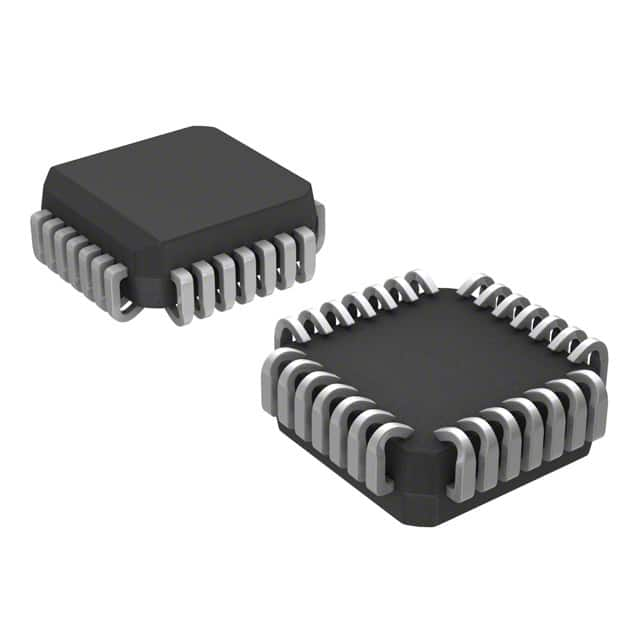Viz Specifikace pro podrobnosti o produktu.

MC10E164FNR2
Product Overview
- Category: Integrated Circuit (IC)
- Use: Logic Gate
- Characteristics: High-speed, ECL (Emitter-Coupled Logic) compatible
- Package: 28-pin PLCC (Plastic Leaded Chip Carrier)
- Essence: This IC is designed to provide high-speed logic functions for various applications.
- Packaging/Quantity: Available in reels of 2500 units
Specifications
- Supply Voltage: -5.2V to -4.5V
- Operating Temperature: -40°C to +85°C
- Propagation Delay: 1.6 ns (typical)
- Input Current: ±20 mA (maximum)
- Output Current: ±100 mA (maximum)
Detailed Pin Configuration
The MC10E164FNR2 has a total of 28 pins. The pin configuration is as follows:
- VEE
- Q0
- Q1
- Q2
- Q3
- Q4
- Q5
- Q6
- Q7
- GND
- D0
- D1
- D2
- D3
- D4
- D5
- D6
- D7
- VCC
- Qn
- Qn
- Qn
- Qn
- Qn
- Qn
- Qn
- Qn
- Qn
Functional Features
- High-speed operation: The MC10E164FNR2 is capable of operating at very high speeds, making it suitable for applications that require fast data processing.
- ECL compatibility: This IC is designed to be compatible with ECL logic levels, allowing for seamless integration with existing ECL-based systems.
- Multiple outputs: The IC provides eight output channels (Q0-Q7), allowing for versatile signal routing and distribution.
Advantages and Disadvantages
Advantages
- High-speed operation enables efficient data processing.
- ECL compatibility ensures seamless integration with existing systems.
- Multiple output channels provide flexibility in signal routing.
Disadvantages
- Requires a negative supply voltage, which may limit its use in certain applications.
- Limited availability of alternative models may restrict design options.
Working Principles
The MC10E164FNR2 operates based on the principles of Emitter-Coupled Logic. It utilizes differential signaling to achieve high-speed operation and noise immunity. The inputs are compared against reference voltages, and the resulting logic levels are amplified and distributed through the output channels.
Detailed Application Field Plans
The MC10E164FNR2 finds applications in various fields where high-speed logic functions are required. Some potential application areas include:
- Telecommunications: The IC can be used in high-speed data transmission systems, such as fiber optic networks and wireless communication infrastructure.
- Data Processing: It can be employed in high-performance computing systems, where fast data processing is crucial.
- Instrumentation: The IC can be utilized in test and measurement equipment that requires high-speed signal manipulation and analysis.
- Industrial Automation: It can be integrated into control systems for industrial machinery, enabling precise and rapid control operations.
Detailed and Complete Alternative Models
While the MC10E164FNR2 is a highly capable IC, there are alternative models available in the market that offer similar functionality. Some notable alternatives include:
- MC100EP16: This IC offers comparable high-speed performance and ECL compatibility.
- 74FCT16373: It provides similar logic functions but operates at lower speeds and is compatible with TTL logic levels.
- SN74LVC16373A: This alternative operates at lower speeds but offers compatibility with CMOS logic levels.
These alternative models can be considered based on specific application requirements and design constraints.
Word count: 411 words
Seznam 10 běžných otázek a odpovědí souvisejících s aplikací MC10E164FNR2 v technických řešeních
Sure! Here are 10 common questions and answers related to the application of MC10E164FNR2 in technical solutions:
Q: What is MC10E164FNR2? A: MC10E164FNR2 is a specific type of integrated circuit (IC) that belongs to the MC10E series. It is commonly used in high-speed digital applications.
Q: What is the purpose of MC10E164FNR2? A: MC10E164FNR2 is designed to provide clock distribution and synchronization functions in electronic systems, especially those requiring high-speed data processing.
Q: What are the key features of MC10E164FNR2? A: Some key features of MC10E164FNR2 include differential inputs, low propagation delay, wide operating voltage range, and compatibility with other ECL logic families.
Q: What is the maximum operating frequency of MC10E164FNR2? A: The maximum operating frequency of MC10E164FNR2 is typically around several gigahertz, making it suitable for high-speed applications.
Q: How can MC10E164FNR2 be used in clock distribution systems? A: MC10E164FNR2 can be used to distribute clock signals across multiple components or subsystems, ensuring synchronized operation and minimizing skew.
Q: Can MC10E164FNR2 be used in both single-ended and differential signaling applications? A: No, MC10E164FNR2 is specifically designed for differential signaling applications and may not be suitable for single-ended signaling without additional circuitry.
Q: What is the power supply voltage range for MC10E164FNR2? A: The power supply voltage range for MC10E164FNR2 is typically between -4.2V and -5.7V, which is compatible with ECL logic levels.
Q: Are there any specific precautions to consider when using MC10E164FNR2? A: Yes, it is important to ensure proper termination of the differential inputs and outputs, as well as follow the recommended power supply decoupling guidelines provided in the datasheet.
Q: Can MC10E164FNR2 be used in low-power applications? A: No, MC10E164FNR2 is not optimized for low-power applications and may consume relatively higher power compared to other logic families.
Q: Where can I find more information about MC10E164FNR2? A: You can refer to the datasheet or technical documentation provided by the manufacturer of MC10E164FNR2 for detailed specifications, application notes, and design guidelines.
Please note that the answers provided here are general and may vary depending on the specific requirements and use cases. It is always recommended to consult the datasheet and relevant technical resources for accurate and up-to-date information.

